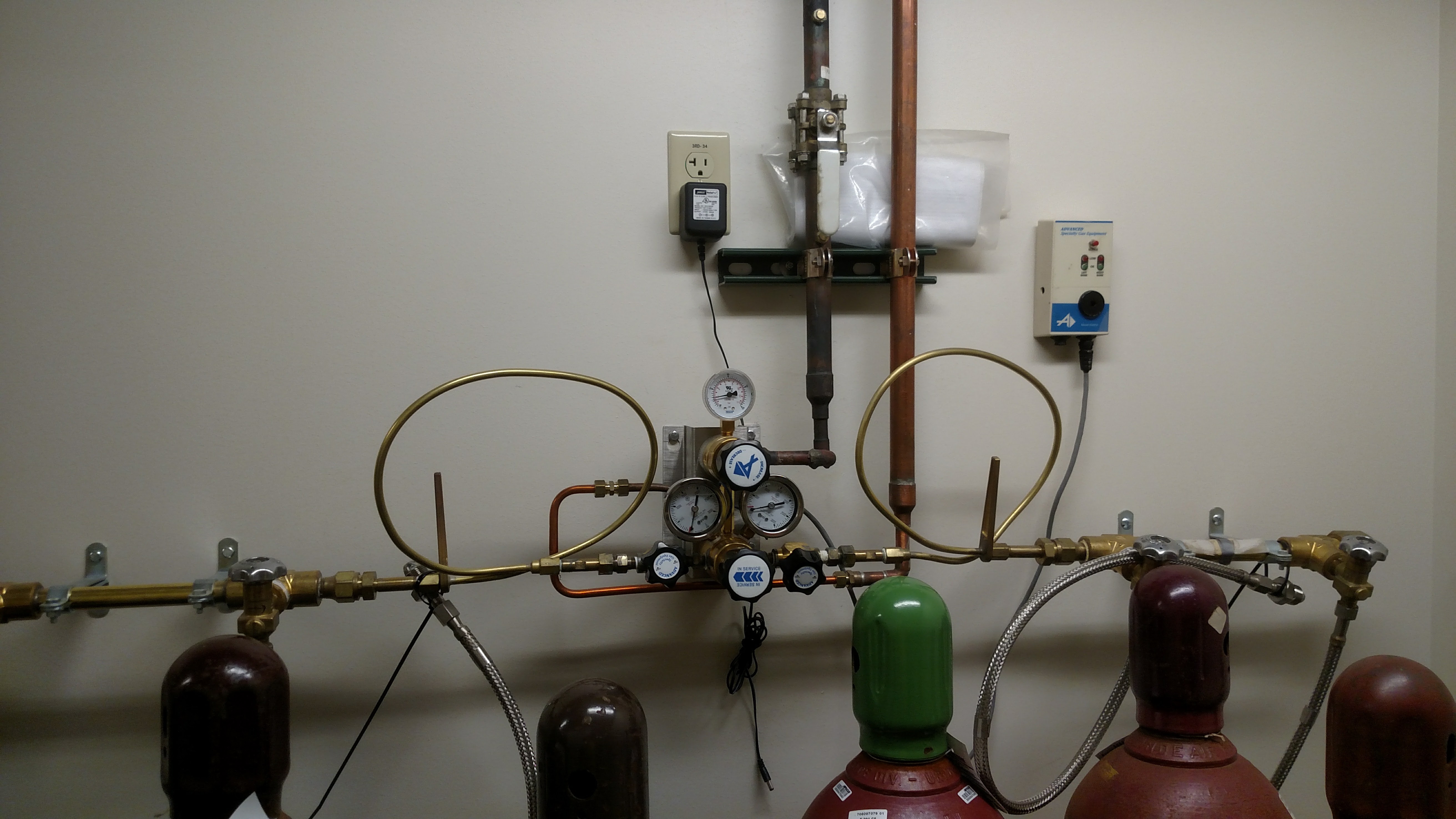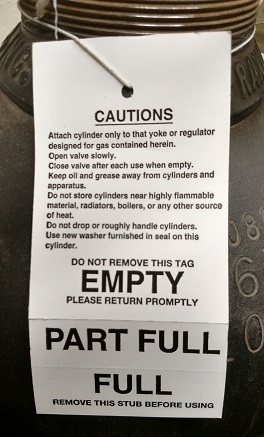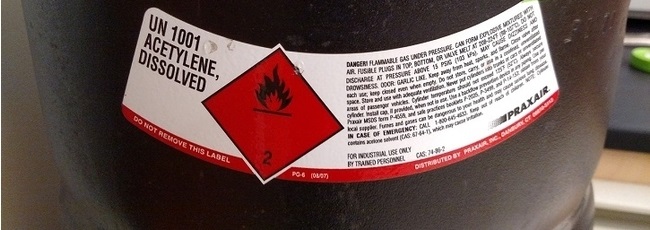
Working with Compressed Gases
Compressed Gas Cylinders
Compressed gas cylinders contain varying pressures of inert, toxic, flammable, oxidizing, corrosive, or combinations of gases.
Care in using, handling, and storing compressed gas cylinders is required due to the high potential for severe incident.
Know gas properties and hazards: Understand the properties, uses, and safety precautions before using any gas or mixture. Consult SDS and manufacturer specification sheets for safety information.
Engineer, assemble, and check equipment properly: Ensure that valves, manifolds, piping, lines, and other equipment
Utilize facilities engineering: Gas cylinder brackets, clamps, restraints and supports are required for storage.
Wear PPE: Wear suitable protective clothing and equipment. Gloves, eye and face protection, and footwear may be warranted.
Secure cylinder with chains or straps before removing
Always use a cylinder cart with a strap to secure the
Modified from <https://ehs.princeton.edu/laboratory-research/chemical-safety/compressed-gas-cylinders>

Example of compressed gas cylinders located in GMS 3035 Cylinder Storage Room
Laboratory safety involves everyone in the laboratory working together to recognize, identify and characterize hazards. Learning how to recognize and identify hazards starts with reading lab procedures carefully, and asking questions about information or instructions you don't understand.

Example of Linde Gas & Equipment Caution tag on













